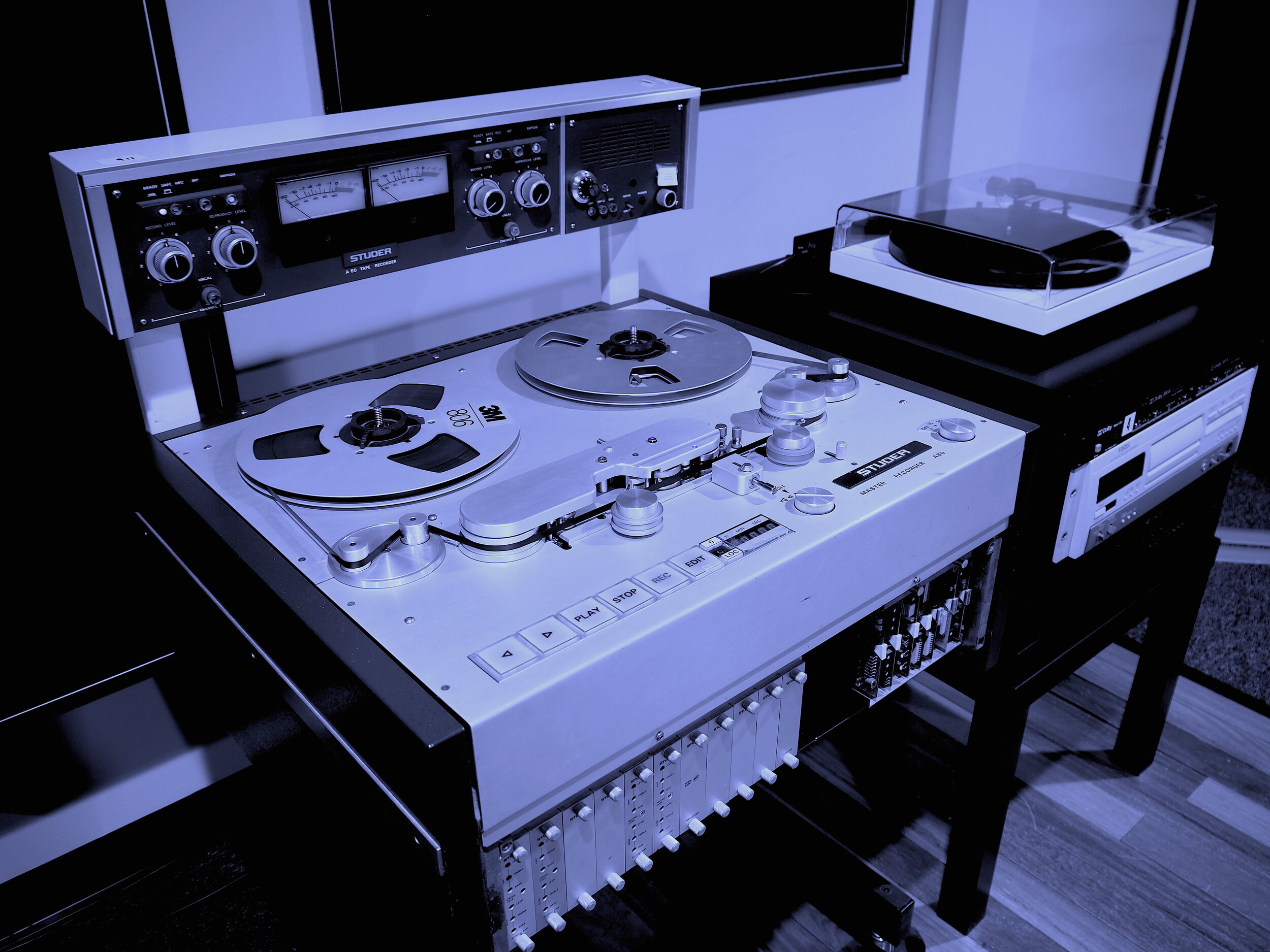Jump to: Mixing for Vinyl • Other FAQ's
Mix Prep for Mastering
Avoid excessive peak-limiting or over-compressing your mixes unless that’s part of your sound. You can always supply 2 versions; one unprocessed and one processed for reference purposes but pleave us some room to work.
Supply 24-bit (or above) wav or aiff files at their originally-recorded sample rate.
We can deal with multiple sample rates. 16-bit mixes are acceptable but not preferred.
Do not supply mp3’s as unmastered sources. Please.
Label your songs with track numbers and proper titles if possible.
Supply all necessary album information on your project form.
Include proper titles, song order, artist and album name, crossfade requests, equalization and dynamics ideas, etc. ISRC codes (if you are getting them) need to be supplied before DDP or CD-R production masters can be made but we don’t need them for wavs or mp3s.
Please do not make any changes to your final masters.
Some applications can really wreck your audio if you don’t pay attention to certain settings. We understand that sometimes a track needs to be removed or added, the song order needs to be changed, etc., sometimes at the last minute. Let us do the revising, that’s why we offer revisions.
Considerations for Vinyl
Vinyl is essentially a continuous spiral wave cut into a physical disc, and there is only so much “wave” you can fit onto that disc. With that in mind:
Loud music and heavy bass takes up the most space
Stereo bass takes up space and can make a playing stylus skip
Outer grooves sound the best, inner grooves are prone to gritty distortion
Sibilant vocals and bright percussive sounds easily distort upon playback
By lowering the volume, cutting bass, and/or by controlling sibilance and extreme dynamics, you can cut longer, safer sides
Lower-volume records sound just as good, but they may have louder surface noise
More Considerations for Vinyl
Vinyl is a physical medium and every stage of production and playback can affect the sound of the record. That’s what we love about vinyl, right?
Vinyl manufacturing standards were perfected during an age of quieter mixes/masters
Shorter, well-balanced, well-produced records usually sound best on vinyl
Extreme mixes/masters or long sides may need to be adjusted in level, eq, dynamics to “work” on vinyl
We can do a lot of that work before it reaches the cutting engineer for a more-predictable result
Time Constraints of Vinyl
It really depends on the mix/master. Most rock records can fit about 18 minutes on a 12” 33 rpm side before the cutting engineer may need to lower the level-to-disc or low-end EQ. For a 7″ 45rpm side this will happen after about 4 minutes. Techno and hip-hop with deep bass will eat up space and time quicker, while sparse acoustic music may take up less. Lowering level is perfectly acceptable but sometimes does bring the noise floor up a bit. Long sides, especially LP sides over 24-minutes, usually require reference lacquers to be purchased from the pressing plant/cutting house. Honestly, reference lacquers are NEVER a bad idea. We are always happy to talk more about records, hit us up.
Other Frequently Asked Questions
Will you give us a free mastering sample?
It depends on our workload and how patient you can be. Paying clients always come first.
Will it cost more to master for vinyl than it will for digital download?
No, our prices are fixed, but if you are releasing in more than one format, there is a $10/song/format fee. See our rates page for more information.
Can I sit in on a mastering session?
At this time, no. But we can certainly have a phone or video chat to discuss your project.
What is the turn-around time for my project?
Turnaround time is about 2 weeks from when we receive your mixes. If you know your release date in advance, get in touch and we can try to block out a mastering date for you. We usually deliver masters 2 or 3 days after the scheduled mastering date, with alternate versions and formats following shortly after approval of the digital masters.
When is payment due?
Payment is due in full upon delivery of the first set of masters. Additional fees (if applicable) are due upon delivery of each subsequent set of masters.
What forms of payment do you accept?
Cash, Check, or PayPal (sent to adam at caulifloweraudio dot com). We also accept Venmo and CashApp. Contact us for the best option.
How do we upload files?
You may upload your files to us using DropBox or a similar service (to adam at caulifloweraudio dot com). Or you may share via GoogleDrive with adam dot boose at gmail dot com.
What is analog tape bouncing?
Transferring your digital mixes to analog tape and back to digital using our Studer A80RC 1/4” stereo mastering deck can add a nice warmth, beef up drum transients, and give depth to an otherwise sterile recording. Some projects really come to life after being bounced to tape, but it’s definitely not for every project. So before committing for the entire project, we've now added a single-song tape bounce sample for $40. If you like the sound of the sample, we'll do the rest of your project to tape for $25/song. We can also make analog safety copies of your 1/4" stereo master tapes using our Studer and Otari MTR-10 1/4” stereo deck.
What is your revision policy?
"Complete" mastering packages are eligible for two rounds of revisions, "budget" packages are eligible for one round, no charge. New mixes received after masters are delivered may be subject to a $75/hour recall and quality check fee, so please make sure you are happy with your mixes before sending them over. Often the new mixes are different enough from the originals that a simple 1:1 recall isn't possible.
I lost my master. Can I order another? Or, it's been a few months since we finished up and I'd like to make some changes...
Your project will be on file for up to one month after your final approval. We usually have them forever, but we can’t guarantee it. If you are concerned about archiving your work, we strongly suggest that you order extra production masters or, better yet, your own back-up of all session files on archival quality DVD-R or HD.
I want my song titles to show up in iTunes/Apple Music, Windows Media Player, etc., when I put my CD into my computer drive.
You will need to submit your album data to the Gracenote and AllMusic databases. iTunes and WMP use these online databases to match information with the CD in the drive. This is not CD-TEXT. CD-TEXT is only used by certain car stereos and stand-alone CD players to display artist/song title information. We will encode your CD-R production master/DDP with CD-TEXT upon request but we do not offer data submission to Gracenote or Allmusic.
Loudness War?
Certain recordings lend themselves better to crunchiness and limited dynamic range; others, not so much. We personally think most music sounds better without being severely limited… it just hits harder and has more depth, especially when you turn it up louder. There's usually an acceptable balance we can strike by sounding modern without sounding destroyed. But we’ll happily set compressors to stun if that’s what the record needs. Get in touch!

